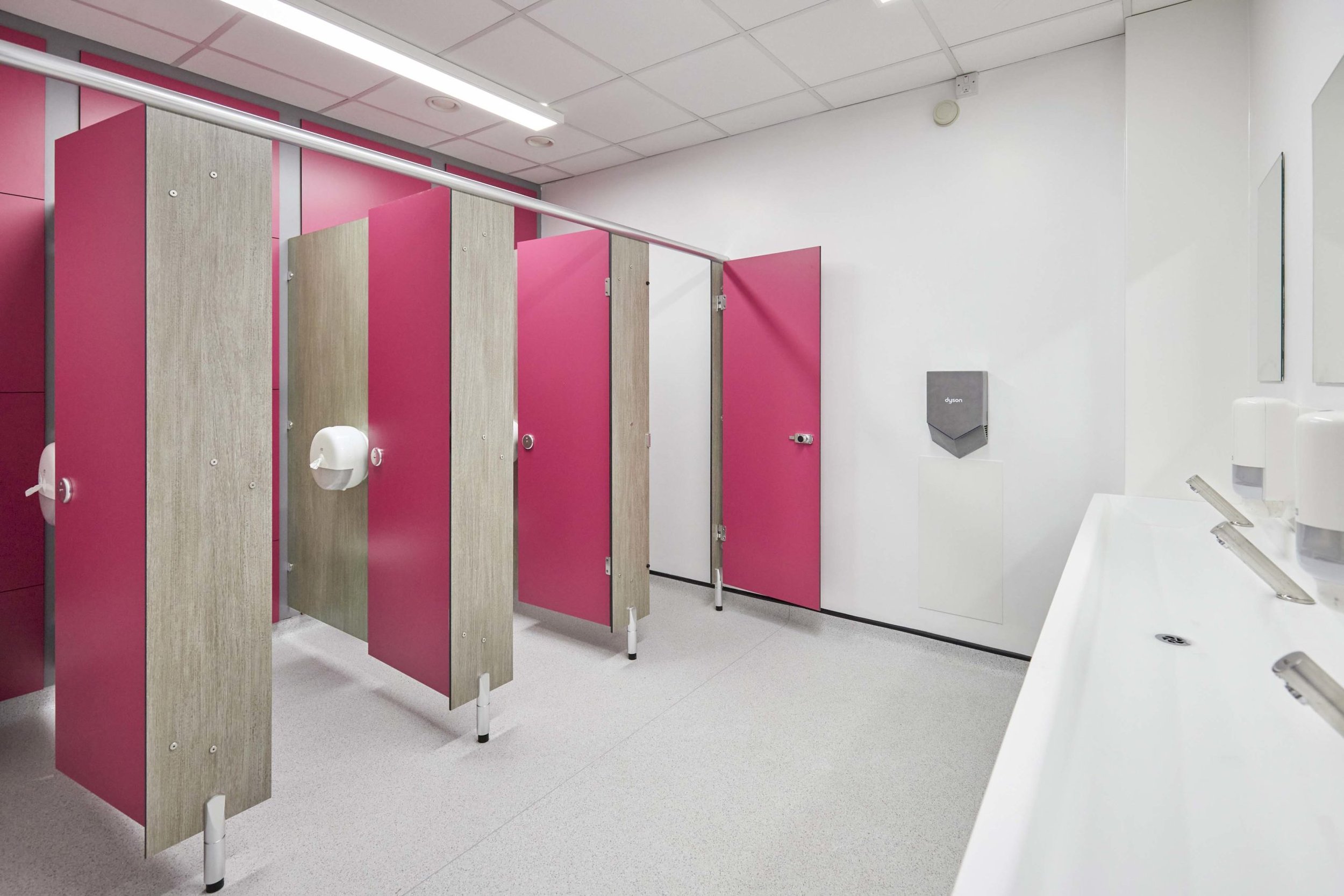(Guide) Are gender neutral or unisex toilets the right choice for my school?
Over the past few years, there has been some focus in the media and society around the provision of various toilet types. We can understand why it is such a sensitive topic and wanted to provide up to date advice for education establishments based on our experience.
Every school has different needs based upon their students and consultations must be held to ensure any changes are in their best interest. Considerations must be made to safety, comfort, faith, culture and accessibility.
> Overview
> Terminology
> Reasons why people might want to change their toilets.
> Pros and cons
> What the government / policy says
> Our advice & conclusion
Terminology
Firstly, let’s clear up the terminology around toilets.
Single-sex toilets are where there are separate toilet provisions for males or females. These remain the most common.
Gender neutral, All gender and Unisex toilets
Usually refer to washrooms which have shared handwashing spaces and cubicles which are often full height, privacy toilets and can be used by all genders. These are often opened up out onto the corridor.
Unisex or Universal toilets* (*as the government calls them) are fully self-contained toilets with a toilet, sink and hand drying facilities, like you would get on a plane, or in your own home and can be used by anyone
Single-sex toilets
Unisex toilets
Universal toilets
What we’ve seen so far
We’ve seen an increase in schools and colleges wanting to convert washroom facilities to unisex and gender neutral areas. Here are the most common reasons:
More inclusive spaces – schools have pupils who have varying gender-identities so want to accommodate their needs and ensure they feel safe.
Following a trend – some staff we’ve consulted with, have admitted they are considering it as it is seen as the ‘modern’ to do.
Schools want to consolidate facilities and repurpose spaces for alternative uses
Reduce anti-social behaviour and vandalism
Pros and cons of unisex and gender-neutral washrooms
➕ Some suggest that gender-neutral or unisex washrooms reduce bullying and reduce vandalism as rooms are more likely to be open plan and light spaces therefore are easier to informally monitor. If you’re considering unisex washrooms due to behavioural or vandalism concerns, take a look at our video on open plan washrooms and anti-vandal fixtures and fittings.
➕ They can free up space or make better use of it - for example making a pair of rooms with 3 cubicles each, into one large room with 9 cubicles.
➕ Enables all staff to monitor the toilets - shares the load
➕ Improves the flow of users during busy times such as break.
➕ In some cases, dependent on layout, they reduce anti-social behaviour
➖ Potential for intimidation between genders and will not eliminate bullying or vandalism
➖ Some students avoid using the facilities all day as they are uncomfortable and prefer same-sex facilities.
➖ Full-height privacy cubicles mask sound and reduce visibility so are less easy to monitor, whether for behaviour or for emergencies. Recently, we had one school feedback that pupils like full-height cubicles as it allows them to misbehave and pupils hide in the cubicles during lessons.
➖ Again with full height cubicles access can be challenge – inward opening doors can be blocked by the user either deliberately or due to illness. However, outward opening doors are more susceptible to damage.
➖ With some full privacy washroom designs, there can be additional costs, for example, lighting and ventilation for each cubicle or room.
➖ Can be a risk of upsetting parents and carers, if not consulted properly about the changes and decisions.
Policy
In May 2024, the government stated that they are writing into law that all new public buildings must contain single sex toilets and if there’s room, ‘Universal’ toilets may be included too. However this only applies to new builds (and buildings with change of use) and does not apply to schools.
However, current DFE School Premises guidance state that ‘Separate toilet facilities for boys and girls ages 8 years or over must be provided in schools except where the toilet facility is provided in a room that can be secured from the inside that is intended for use by one pupil at a time.’ So again, single sex washrooms are preferable and universal toilets can be included if space permits. And excluding accessible toilets, pupil washrooms should not be used by teaching staff or visitors.
Of course, we will be keeping up to date with all of the developments so get in touch if you need advice.
Our advice & conclusion
Most of the schools we have refurbished generally, have kept most of the school washroom facilities as single sex washrooms and have had one or two specific unisex washrooms installed throughout the building or the campus. Some schools, particularly Secondary, have since reverted from unisex back to single sex or asked students to use a particular side of the washroom, however it is usually successful in Primary.
Overall, we’d suggest that keeping most of your washrooms as single sex is a good way to go (and they will be compliant) with one or a few of the washrooms as universal, self-contained washrooms. We hope that universal washrooms will be the way to increase the comfort of anyone who wants to use them as they have complete privacy.
Definitely consult and inform parents and guardians if any changes impact their children's privacy or safety . As we all know, the safety and comfort of children should be the most important factor in your washroom decisions.



